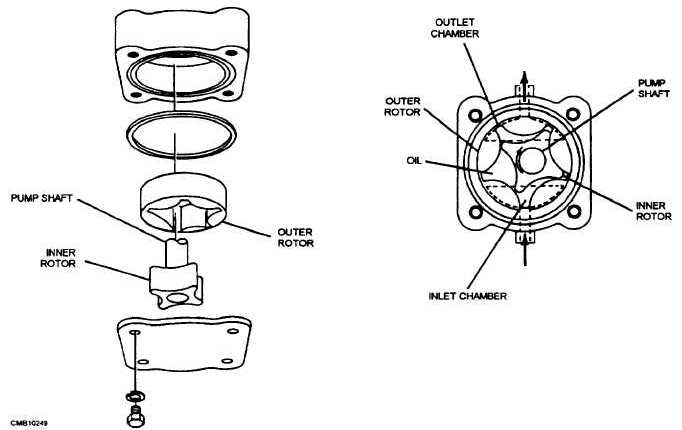
Figure 6-20. - Oil level gauge.
holds a supply of oil for the lubrication system. The oil pan is fitted with a screw-in drain plug for oil changes. Baffles may be used to keep the oil from splashing around in the pan.
The sump is the lowest area in the oil pan where oil collects. As oil drains from the engine, it fills the sump. Then the oil pump can pull oil out of the pan for recirculation.
Oil Level Gauge
The oil level gauge, also known as a dipstick, is usually of the bayonet type (fig. 6-20). It consists of a long rod or blade that extends into the oil pan. It is marked to show the level of oil within the oil pan. Readings are taken by pulling the rod out from its normal place in the crankcase, wiping it clean, replacing it, and again removing and noting the height of the oil on the lower or marked end. This should be done with the engine stopped unless the manufacturer recommends otherwise. It is important that the oil level not drop below the LOW mark or rise above the FULL mark.
Oil Pump
The oil pump is the heart of the lubricating system; it forces oil out of the oil pan, through the oil filter, galleries, and to the engine bearings. Normally, a gear on the engine camshaft drives the oil pump; however, a cogged belt or a direct connection with the end of the camshaft or crankshaft drives the pump in some cases.
There are two basic types of oil pumps - rotary and gear.
The ROTARY pump (fig. 6-21) has an inner rotor with lobes that match similar shaped depressions in the

Figure 6-21. - Rotor-type oil pump.
Continue Reading